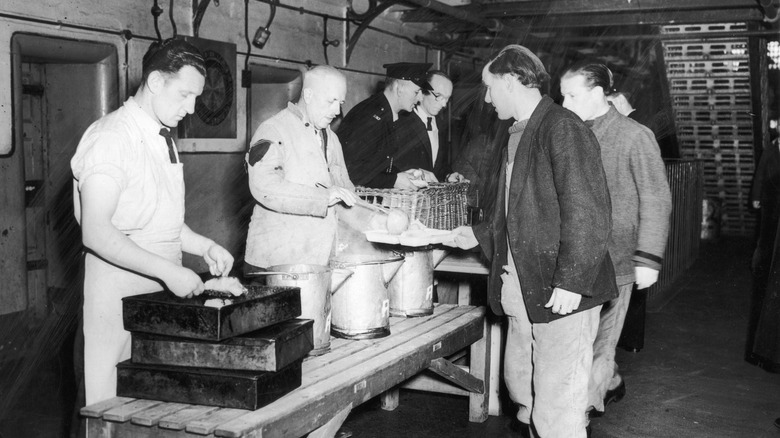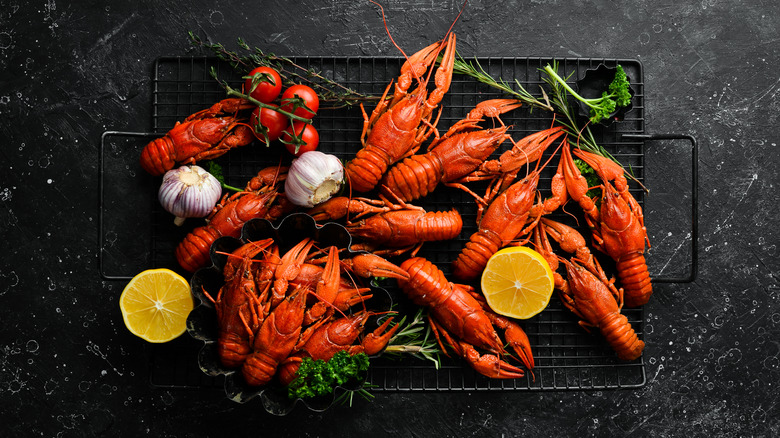The Expensive Delicacy That Was Once Served To Prisoners
When envisioning a luxurious evening fit for royalty, a lavish feast is essential. Amongst the most extravagant foods are caviar, truffles, oysters, foie grois, and of course, the infamous lobster. The elegant fare that is now associated with high class and big dollar signs was once referred to as the "cockroach of the sea," says Business Insider. Before lobster became unattainable for the average household, you couldn't pay people to eat them.
There was once such a surplus of lobsters that they coated the beaches of Massachusetts Bay Colony, quickly becoming a universally avoided food. Native Americans and colonists used the seafood as food for crops and fish, but not themselves if they could help it. The abundance of crustaceans led to a budget-friendly cost that earned them a new nickname from the colonial era onward — the "poor man's protein." Lobster was essentially considered slop — only fit for prisoners until east coast restaurants began serving it in the 1880s, according to History.
Lobster, the fish bait turned delicacy
Unlike other common foods, lobster wasn't rationed during World War II because it had become a delicacy. This is what really pushed lobster from pricey to extravagant (per History). With the affluent population devouring lobster at outlandish costs, the crustacean became synonymous with luxury. Today, inland lobster lovers still have to pinch pennies for a nibble of the shellfish, and even those living in lobster fishing epicenters won't come across a bargain lobster roll. In Maine, where fishermen catch over 96 million pounds of lobster on an off-year, it's tough to find live lobster for a single-digit price per pound, says ABC News.
It's mind-boggling that a crustacean once used as fish bait is now the winning catch, but lobster isn't the only seafood that's rebranded over the years. Oysters, the stars of most high-end raw bars, were once dished out of carts on the streets of New York City. New York Public Library shares that oysters were abundant just like lobsters, so the cost stayed low until the growing city's pollution sadly made them inedible. The Big Apple's restaurant scene still serves both oysters and lobster, just not locally sourced and certainly not cheap.

